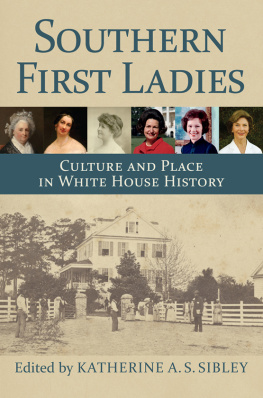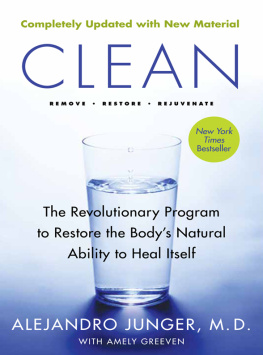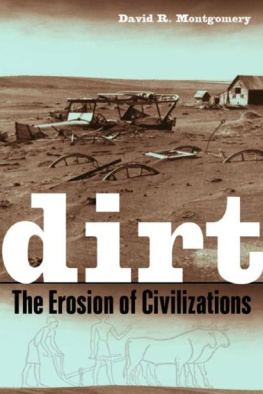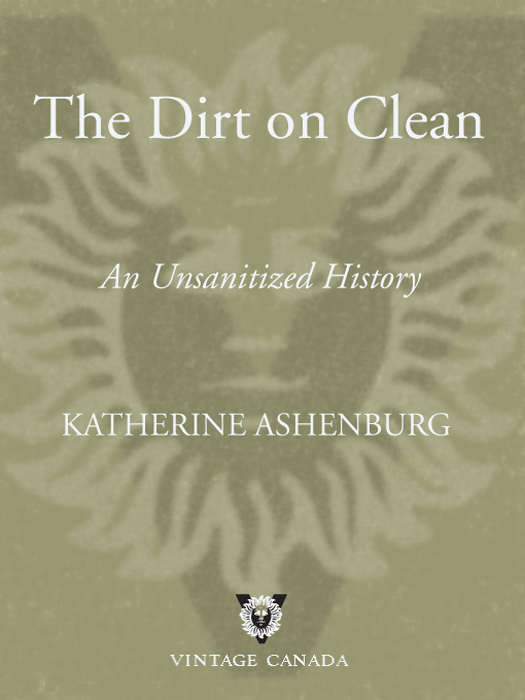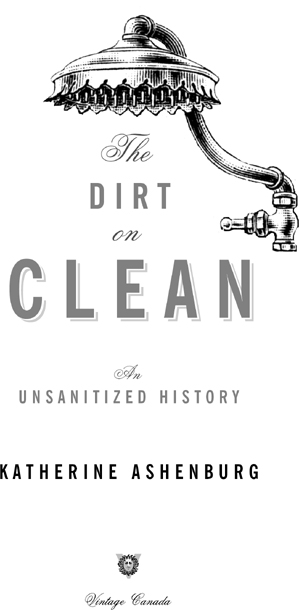N ATIONAL B ESTSELLER
F INALIST FOR THE N EREUS W RITERS T RUST N ON -F ICTION P RIZE
N EW Y ORK P UBLIC L IBRARY B EST B OOK
Praise for The Dirt on Clean

A terrific history of personal hygiene Ashenburg has produced a wonderfully interesting and amusing book.
Daily Mail
Utterly charming Ashenburgs achievement in this book is to put the daily shower in historical context, and not by chance show us that clean is always relative.
The Vancouver Sun
Ashenburg is a lively and entertaining guide A sparkling, discursive and witty history: good, clean fun.
New Statesman
A smart gallop Katherine Ashenburg has unearthed marvellously jaw-dropping material in her research This is a rich, messy stew of a subject, often irresistibly yucky, and Katherine Ashenburg does it proud. The Dirt on Clean is stuffed to bursting with highly memorable stories and characters.
Literary Review of Canada
The only possible complaint about Ashenburgs exceptionally enjoyable book is that, being beautifully designed and illustrated, it is not suitable for reading in the bath.
The Sunday Times
Brimming with lively anecdotes, this well-researched, smartly paced and endearing history of Western cleanliness holds a welcome mirror up to our intimate selves, revealing deep-seated desires and fears spanning two thousand-plus years.
Publishers Weekly
With significant research and well-placed examples, Ashenburg outlines just how notions of cleanliness have changed and where they intersect with sexuality, social movements, and of course, hygiene The book successfully lays bare the fact that our idea of cleanliness is a haphazard construction. By the end, youll look at your bathroom a little differently.
Quill & Quire
Katherine Ashenburg has a real gift for making the abhorrent utterly irresistible We shouldnt be surprised by her ability to wring eloquence out of something as foul as perspiration, soot and plain old grime.
Toronto Star
Ashenburg rolls up her sleeves and takes us on an engaging tour of hygiene through the ages. Her masterful mix of erudition and anecdote makes this a fascinating, fast-paced read More than just a witty insight into washing, her book confronts our obsession with preening, plucking and perfuming our bodies so that we smell less like humans and more like exotic fruits Thought-provoking, charming and great fodder for dinner party chat, this is a memorable read.
Time Out
For Kate and John,
who love their bath,
and for Alberto,
always immaculate
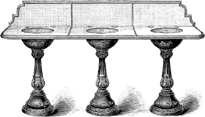
ONE
TWO
THREE
FOUR
FIVE
SIX
SEVEN
EIGHT
NINE

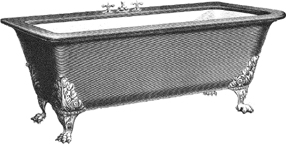
BUT DIDNT THEY SMELL?
F or the modern, middle-class North American, clean means that you shower and apply deodorant each and every day without fail. For the aristocratic seventeenth-century Frenchman, it meant that he changed his linen shirt daily and dabbled his hands in water but never touched the rest of his body with water or soap. For the Roman in the first century, it involved two or more hours of splashing, soaking and steaming the body in water of various temperatures, raking off sweat and oil with a metal scraper, and giving himself a final oilingall done daily, in company and without soap.
Even more than in the eye or the nose, cleanliness exists in the mind of the beholder. Every culture defines it for itself, choosing what it sees as the perfect point between squalid and over-fastidious. The modern North American, the seventeenth-century Frenchman and the Roman were each convinced that cleanliness was an important marker of civility and that his way was the royal road to a properly groomed body.
It follows that hygiene has always been a convenient stick with which to beat other peoples, who never seem to get it right. The outsiders usually err on the side of dirtiness. The ancient Egyptians thought that sitting a dusty body in still water, as the Greeks did, was a foul idea. Late-nineteenth-century Americans were scandalized by the dirtiness of Europeans; the Nazis promoted the idea of Jewish uncleanliness. At least since the Middle Ages, European travellers have enjoyed nominating the continents grubbiest countrythe laurels usually went to France or Spain. Sometimes the other is, suspiciously, too cleanwhich is how the Muslims, who scoured their bodies and washed their genitals, struck Europeans for centuries. The Muslims returned the compliment, regarding Europeans as downright filthy.
Most modern people have a sense that not much washing was done until the twentieth century, and the question I was asked most often while writing this book always came with a look of barely contained disgust: But didnt they smell? As St. Bernard said, where all stink, no one smells. The scent of one anothers bodies was the ocean our ancestors swam in, and they were used to the everyday odour of dried sweat. It was part of their world, along with the smells of cooking, roses, garbage, pine forests and manure. Twenty years ago, airplanes, restaurants, hotel rooms and most other public indoor spaces were thick with cigarette smoke. Most of us never noticed it. Now that these places are usually smoke-free, we shrink back affronted when we enter a room where someone has been smoking. The nose is adaptable, and teachable.
The North American reader, schooled on advertisements for soap and deodorants, is likely to protest at this point: But body odour is different from smoke. Body odour is innately disgusting. My own experience tells me that isnt true. For the first seven years of my life, I spent countless hours with my maternal grandmother, who came from Germany. She lived only a few houses down the street from us in Rochester, New York, and she often took care of us grandchildren. She was a cheerful, hard-working woman, perpetually cooking, cleaning, sewing, crocheting or knitting. Two smells bring my grandmother vividly to mind. One is the warm amalgam of yeast and linen, from the breads she shrouded in tea towels and set to rise on her dining-room radiators. The other smell came from my grandmother herself. As a child, it never occurred to me to describe it or wonder what it wasit was just part of my grandmother. Whom I loved, so the smell never troubled me.




